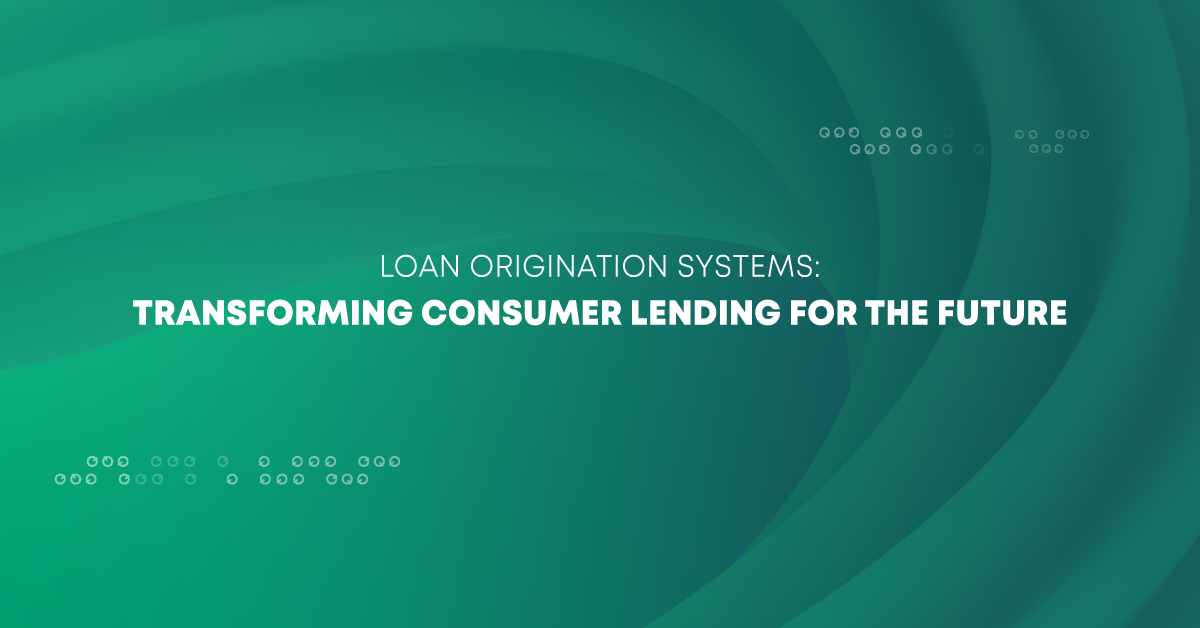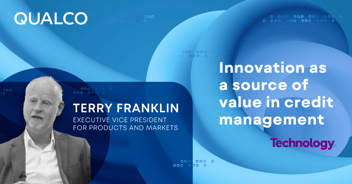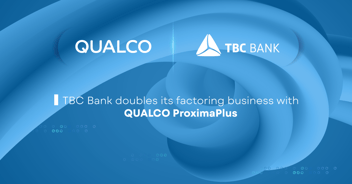Loan Origination Systems: Transforming Consumer Lending for the Future
QUALCO |
As the financial sector rapidly evolves, driven by technological advancements, loan origination processes are experiencing profound changes. A key development is the growing adoption of Loan Origination Systems (LOS), which have become essential tools for financial institutions.
According to recent forecasts from Future Market Insights, the global loan origination software industry is projected to grow at a CAGR of 13.4% from 2023 to 2033, reaching a market size of US$ 17,505.7 million by 2033. As demand for unsecured credit rises, financial institutions face critical challenges, including regulatory compliance, data security, legacy system integration, customer onboarding, and scalability—issues LOS are uniquely positioned to address.
The need for effective loan origination systems is particularly pronounced in the alternative lending sector, where emerging digital lending platforms are playing a crucial role. These platforms facilitate faster approvals and enhance risk assessments by integrating with sophisticated systems and leveraging cutting-edge technologies.
This blog covers:
- The current landscape of consumer lending
- The primary advantages of LOS
- How can lenders meet shifting market demands
The Consumer Lending Landscape
The consumer lending market has shifted significantly with the rise of fintech platforms and marketplace lending. The alternative lenders fill a gap left by traditional banks, offering unsecured loans with faster approval processes to individuals who may not qualify for conventional credit. However, this speed and accessibility increase risk, as decisions are made without collateral.
Traditional lenders face challenges due to slower technology adoption, especially in loan origination, which often relies on manual processes and results in inefficiencies. In contrast, fintech firms use digital platforms to quickly assess creditworthiness and provide near-instant decisions, creating a competitive edge.
Research by Danisewicz and Elard underscores the critical role of advanced lending technologies, showing how limited access to these tools can contribute to higher bankruptcy rates among low-income borrowers. Their findings highlight the importance of loan origination systems that combine speed with robust risk management to reduce defaults and financial instability.
Key Benefits of Loan Origination Systems
Loan Origination Systems offer numerous benefits, particularly valuable in providing and managing unsecured loans. These systems are designed to handle the complexities of modern lending, offering a more efficient, accurate, and compliant loan processing environment.
- Automation and Efficiency
LOS platforms streamline the loan application and approval processes by automating key tasks such as data entry, document validation, and credit checks. This minimises manual intervention, reduces errors, and significantly shortens processing times, enabling institutions to handle larger volumes of applications with fewer resources. - Advanced Risk Assessment
Given the higher risks of unsecured lending, LOS systems integrate advanced analytics tools and alternative data sources (e.g., rental payment histories and utility bills) to provide a more comprehensive view of a borrower’s financial health. This allows lenders to accurately assess risk, extend credit options, and reduce the likelihood of default without excessive exposure. - Improved Customer Experience
LOS platforms offer multi-channel interfaces that allow borrowers to apply through various platforms, including online, mobile, branches, and call centers. Real-time status updates and a seamless application process enhance borrower satisfaction and improve lenders' efficiency. - Regulatory Compliance
With constantly evolving regulatory requirements, LOS platforms help institutions remain compliant by embedding automated regulatory checks into the loan lifecycle. For instance, a LOS can integrate relevant standards into workflows, minimising the risk of legal disputes and fines by ensuring each loan application adheres to necessary regulations. - Cost Efficiency and Scalability
By automating various stages of the loan process, LOS platforms reduce dependence on manual labor, thus lowering operational costs. A scalable LOS allows institutions to manage growth effectively, processing a high volume of applications without proportional increases in staffing or resources.
Document AI processing with QUALCO’s Loan Originator (QLO)
QUALCO Loan Originator (QLO) integrates Document AI processing to enhance loan origination workflows with powerful document processing functionalities. Using AI capabilities, QLO identifies and classifies loan application documents uploaded in the system (such as income statements or ID cards) based on their content and extracts the necessary information using a trained model. Simultaneously, QLO triggers automated workflows populated with the extracted data.
The integration of Optical Character Recognition (OCR) Document AI processing into QLO significantly enhances the efficiency and accuracy of loan origination processes. By automating the extraction of data from documents, this AI technology transforms traditional manual data entry tasks. As a result, businesses benefit from a faster, more agile, and error-resistant process, ultimately reducing operational costs, improving data accuracy, and accelerating decision-making. Incorporating Document AI processing into loan origination platforms represents a crucial step towards digital transformation in the financial services sector.
Strategic Recommendations for Banks
To fully leverage the advantages of LOS, financial institutions should adopt strategies tailored to achieve the following:
- Accelerate Digital Transformation: Automate key tasks like credit assessment, document verification, and approval workflows to improve efficiency and reduce costs.
- Invest in Advanced Data Analytics: Incorporate AI-driven tools to enhance risk assessments, using both traditional and alternative data sources for accurate credit decisions.
- Design Omnichannel Customer Journeys: Create seamless, customer-centric loan processes that work across all channels (e.g., mobile, online, and in-branch).
- Enhance Regulatory Compliance: Integrate compliance tools that automatically monitor and update according to legal requirements, minimising the risk of regulatory breaches.
Unlocking the Potential of QUALCO Loan Originator (QLO)
QUALCO Loan Originator (QLO) equips financial institutions with the advanced tools they need to optimise their loan origination process. Built to address the unique demands of modern lending, QLO empowers lenders to:
- Streamline Processes Across Credit Products: Support multiple credit products—such as consumer loans, credit cards, and corporate loans—with secure, multi-channel application processing that enhances the customer experience.
- Integrate Advanced Risk Assessment: Utilise a combination of traditional and alternative data sources to evaluate borrower risk more precisely, enabling responsible credit extension and reducing default rates.
- Automate Compliance Management: Embed real-time regulatory checks throughout the loan lifecycle, ensuring adherence to industry standards and eliminating compliance-related costs.
- Leverage AI Capabilities for Efficiency: Use AI-driven document classification and data extraction to handle loan documentation accurately and quickly, lowering operational costs by reducing manual processing.
- Scale Efficiently: Manage high application volumes without additional staffing needs through automated workflows that maintain agility and support sustainable growth.
See QUALCO Loan Originator in Action
Ready to see how QUALCO Loan Originator can transform your lending processes? Connect with us today to schedule a demo and explore how QLO can help your institution achieve faster processing, improved risk management, and sustainable growth.


.png?width=352&name=Artboard%202%20copy%204%20(1).png)

